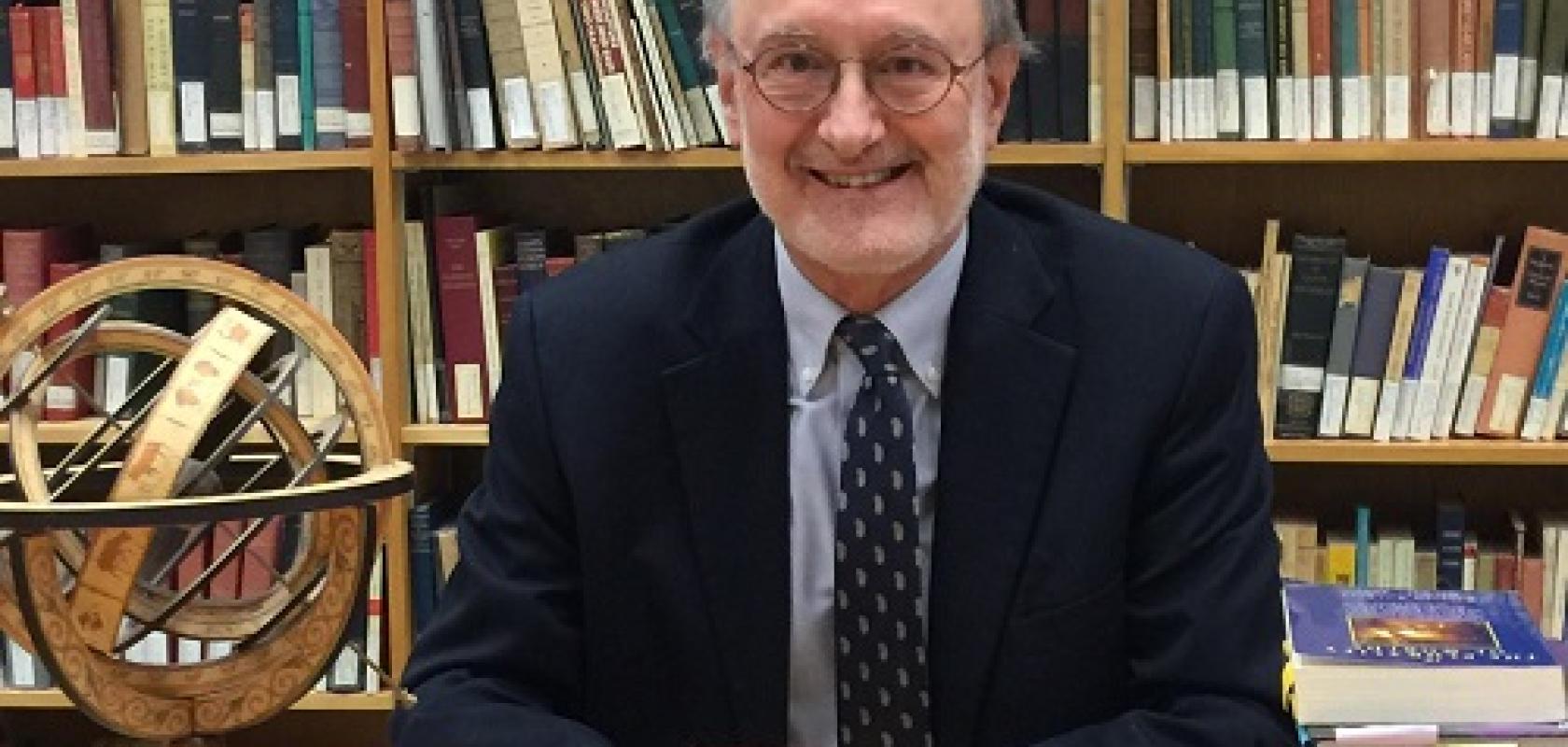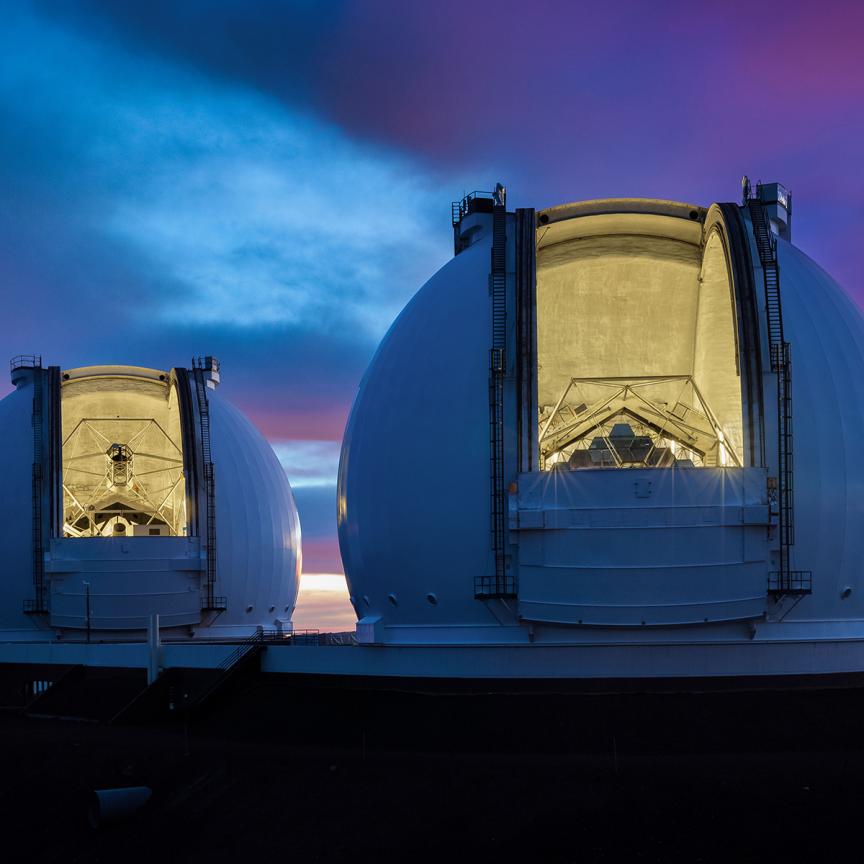As images emerge of galaxies over 13 billion light years away, it is clear that the James Webb Space Telescope (JWST) is a notable success for the optics industry as well as the space industry. The suite of scientific instruments on board – NIRcam, NIRSpec, MIRI and NIRISS – promise to give unprecedented insights into the formation of the earliest stars and galaxies, the atmosphere of exoplanets around nearby stars, and even more detail on the outer reaches of our own solar system.
If, however, we were to pick a single part through which to view the history of this $10 billion telescope, then it would probably be its 6.5-metre primary mirror. This distinctive folding mirror, made up of 18 hexagonal mirror segments, reflects the intercepted light onto a smaller secondary mirror which directs the light to the four scientific instruments. It also demonstrates the technical and political achievement of the JWST.
As Robert Smith, on-scene historian to JWST since 2002, explained to Electro Optics, with such a large project, the crucial issue is getting it started in the first place.
‘There had been a major conference in 1989 asking about the successor to the Hubble Space Telescope, and how big it should be but, when the Hubble Space Telescope was launched in 1990, it wasn't long before people found that it had a very serious optical flaw,’ Smith recalled. ‘The primary mirror was a bit too flat at the edges so you ended up with spherical aberration. This put a block on the chance that you could actually start building or winning approval for the Next Generation Space Telescope, as JWST was then called. It had to wait until Hubble was fixed and astronauts went up on the space shuttle and took replacement instruments designed to compensate for the flawed mirror in 1993. The serious design work - doing feasibility studies with industry and so on - didn't really get going until 1996.’
There is inevitably a trade-off between the cost of the project, the level of ambition and the science that will be solved, and all other things being equal, the bigger the primary mirror the more powerful the telescope and the better the science that can be done with it.
Smith continued: ‘A group of astronomers who looked very closely at possibilities reported in 1996, and they were suggesting a four-metre telescope. But the then NASA administrator said: “Look, why are you guys being so short of ambition here, why don't you build something larger, we're not going to rush this”. And they eventually agreed on a 6.5-metre telescope, functioning in the infrared, because that's where the best science was going to be. Because what you would like to get at are the very first stars and galaxies to be formed in the universe, and that means you've got to be sensitive in the infrared region of the spectrum.
‘At that point there were very few exoplanets known,’ he added. ‘The first really definite evidence for an exoplanet only arrived in 1995, which is just a short time before they were seriously planning for the Next Generation Space Telescope. Now the science has shifted and exoplanets are a very important consideration for the scientific uses of the telescope.’
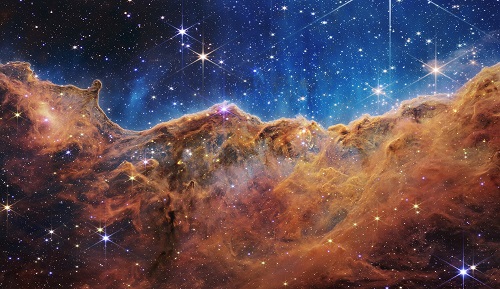
'Cosmic Cliffs' in the Carina Nebula (NIRCam Image). The edge of a young, star-forming region NGC 3324 in the Carina Nebula. Credit: NASA, ESA, CSA, STScI
While a 6.5-metre mirror would enable the best science, it was not going to fit on an Ariane 5 rocket if it was already set up, so it was necessary to use a segment arrangement. The 18 mirror segments must all be aligned correctly to create in effect one very smooth 6.5-metre mirror rather than 18 different segments. As Smith explained one of the most interesting areas was the choice of material for the mirror: ‘Beryllium was picked because it's lightweight, and there was a concern about the amount of mass on the telescope. It’s also a strong material, and one which holds its shape extremely well and consistently even at low temperatures, because a fundamental point about James Webb is that it's operating at cryogenic temperatures.’
He explained that the mirror sits at 50 degrees kelvin, which is necessary to minimise any noise that could swamp the signal being directed onto the scientific instruments. However, the polishing process for beryllium is quite complex, Smith said, involving various levels of polishing interspersed with testing in the cryo facility.
‘The choice of beryllium was really important, but then there are these consequences – it just takes a substantial amount of time to do the polishing, making sure that everything is aligned correctly,’ he said. ‘The optics part of James Webb has gone extremely well in what you might call the technical terms, even though things may have taken longer than planned.’
Such technical issues can also have political implications, and big projects can get a lot of attention from the US Congress: ‘One of the important moments in the telescope's history generally was that it was zeroed out of the budget by the US Congress in 2011,’ Smith recalled. ‘If that decision had stood, the project was cancelled, it was all over.
‘A House of Representatives committee made the call, then there was a political fight, support in the Senate, a compromise, and the project proceeded. But it was a moment of real peril because the project was going to take more time and cost more money than was originally planned.’
He continued: ‘Many big projects have these sorts of moments. It's not just solving the technical problems that you are facing, but it's also necessary to be aware of the political issues in play. An example of a big project that was actually cancelled by the US Congress was the so-called Superconducting Super Collider, which was cancelled by the US Congress after $2 billion had been spent. It was going to be much bigger than the Large Hadron Collider at Cern, it was going to be more powerful, but it was late, it was over budget, the justification for it wasn't really clear to the US Congress and they just killed it.’
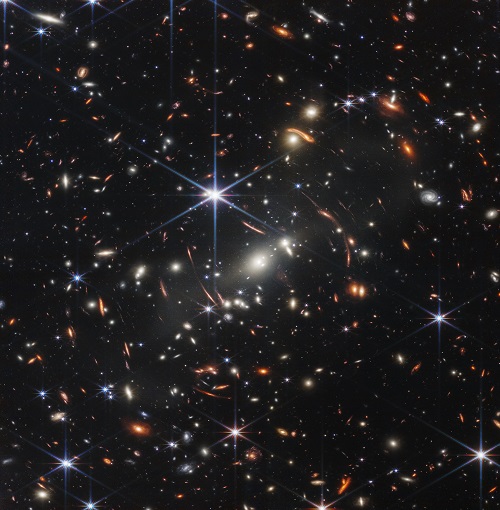
Webb's first deep field image (NIRCam Image). Thousands of galaxies flood this near-infrared image of galaxy cluster SMACS 0723. Credit: NASA, ESA, CSA, STScI
Those first images that were released by JWST in mid-July were the result of a very long, and expensive, technical and political process, and the true return on investment won’t be known for many years to come. Even now we probably don’t know what the most important questions will be that the JWST answers.
Smith said: ‘You've got certain scientific problems in mind, but what you are trying to do is build capability. Sometimes the people involved on these kinds of projects talk about the conscious expectation of the unexpected. That is, you don't quite know what it is you're going to be doing, but you certainly expect to be doing stuff you're not expecting to be doing. You can't box yourself in in terms of your designs and your capabilities, so you want to try and build into your instruments more capability than is needed just to address the scientific problems that you've started with.’
Whatever the questions the JWST does or doesn’t answer, its early success would nonetheless seem to bode well for the next generation of space telescope and space optics.
Sponsored: Optical replication offers significant advantages in space instrumentation
Optical replication allows the creation of high-specification mirrors and gratings with highly repeatable performance. This is critical for space instrumentation, and was a key criterion for the selection of Spectrum Scientific as a supplier for UV blazed gratings for NASA’s Joint Polar Satellite System (JPSS) program.
The JPSS satellites are designed to provide sophisticated meteorological data and observations of atmosphere, ocean and land for short-term, seasonal and long-term monitoring and forecasting. These satellites carry instruments that gather global measurements of atmospheric, terrestrial and oceanic conditions, including sea and land surface temperatures, vegetation, clouds, rainfall, snow and ice cover, fire locations and smoke plumes, atmospheric temperature, water vapour and ozone.
The ozone mapping and profiler suites (OMPS) for JPSS-3 and JPSS-4, which are due to launch in 2028 and 2032 respectively, include next generation back-scattered ultraviolet (BUV) radiation sensors consisting of three spectrometers: a downward-looking nadir mapper, a nadir profiler and a limb profiler.
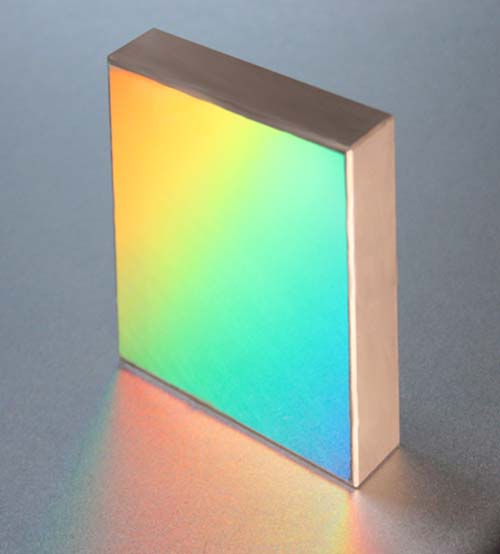
Blazed holographic grating
The grating specification for OMPS required very high efficiency, from 250 to 310nm, minimal wavefront distortion and extremely low stray light. Holographic gratings were selected as they produce the lowest stray light possible due to the inherent nature of the holographic process. Unlike mechanically ruled and lithographic manufacturing methods, interference lithography (holographic) gratings produce perfectly equidistant groove periods with excellent groove shape, eliminating ghost images and other forms of optical scatter.
Optical blazing, to create a sawtooth profile giving high diffraction efficiency, requires many variables to be tightly controlled to obtain a precise groove profile with the blaze angle optimised for the specified wavelength. Exposure uniformity, angles of incidence, etching parameters and post processing activities need to be tightly controlled.
At the specified angle of incidence, the absolute diffraction efficiency at 250nm was 74 per cent, which is only a few per cent lower than the theoretical limit. The combination of high diffraction efficiency and low stray light enabled excellent signal-to-noise ratios – critical for atmospheric sensing instruments.
Stray light was measured relative to the intensity of the first diffracted order using a Scatterworks BRDF instrument. Measurements were made in the plane of diffraction and out-of-plane. The performance was exceptional with energy levels falling off sharply, reducing to less than 1x10E-6 a few nanometres away from the first order. Energy between orders fell below 1x10E-8. (Figure 1)
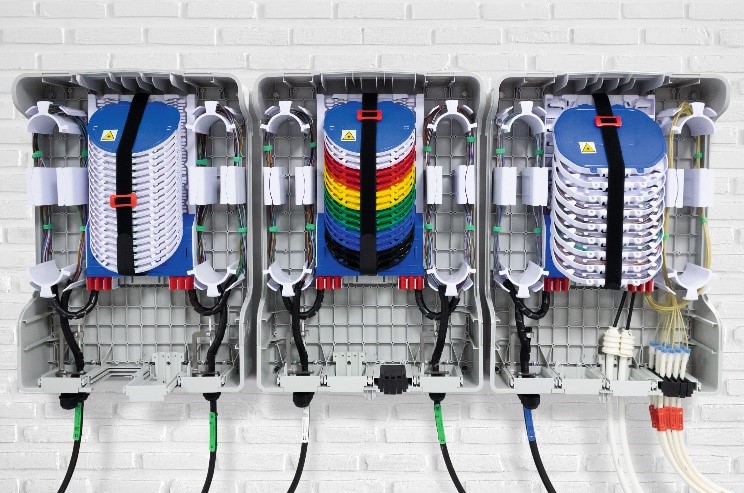
Figure 1
In a similar requirement for fast-focusing concave mirrors with a focal ratio of F/1 (NA = 0.45), NASA’s Jet Propulsion Laboratory required high-performance UV mirrors on aluminium substrates. Surface roughness and figure were critical requirements and the mirrors needed to provide excellent imaging qualities with very low optical scatter and with a surface roughness of less than 10 angstroms (with best effort of 5 angstroms) and surface figure error < 25nm RMS. It is common for polished glass substrates to meet these requirements; however, aluminium mirrors cannot normally achieve this. It is possible to diamond turn concave mirrors onto aluminium that is plated with electroless nickel, however, it would require post-polishing each mirror one at a time to obtain the final figure and to remove the periodic structure left over from the diamond turning process. Very few companies have the capability of achieving these requirements and the process would need to be repeated for each mirror, incurring a substantial cost.
JPL recognised that a replicated optic would meet the performance requirements and be very cost effective. The strategy was to transfer the precision surface of a polished glass optic onto a machined aluminium substrate. For this project, a precision glass optical tool was finally polished using the magnetorheological finishing (MRF) method. This technique uses a deterministic process to control the final figure and inherently results in very low surface roughness. The accuracy of the concave radius was held to ± 0.1 per cent (± 100 microns). With precision glass master tools, it would be possible to use the replication process to produce hundreds of virtually identical parts and meet the stringent specifications required.
The final set of concave mirrors had a surface figure of less than λ/80 RMS at 632.8nm and surface roughness on the order of 7Å. The final overcoat was aluminium with reflectivity at 200nm exceeding 90 per cent.(Figure 2)
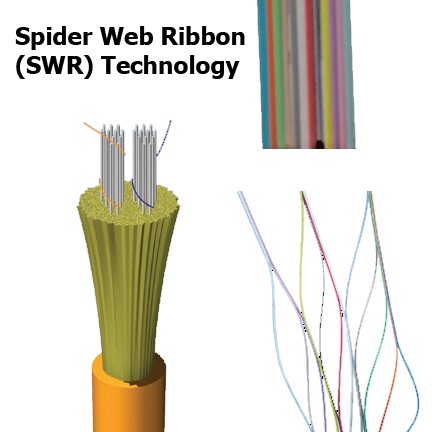
Figure 2
These case studies demonstrate that optical replication is not only a solution for many commercial applications, but also for critical, high specification instruments and sensors used in space flight, providing performance enhancements, cost advantages and repeatability.
Further information

